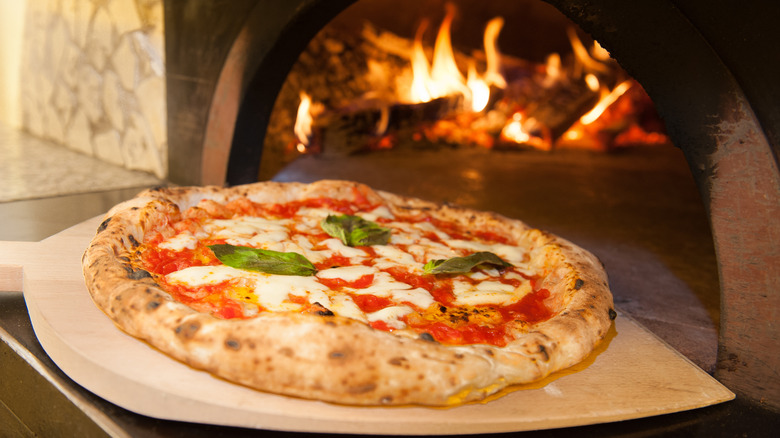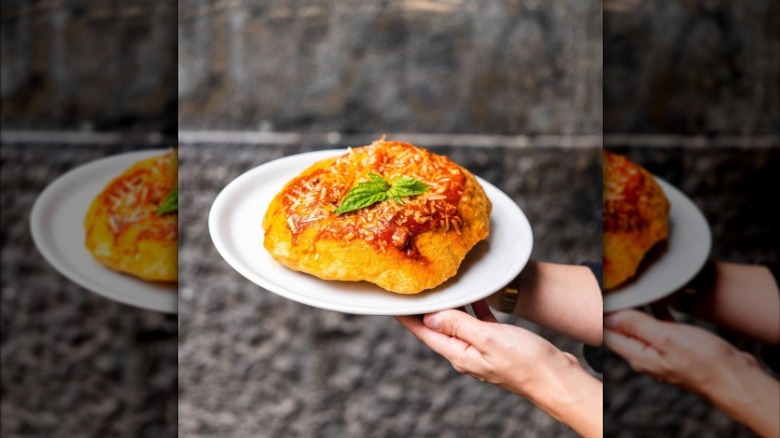Yes, You Can Actually Fry Pizza
Naples is famous for a few things, most notably its historic city center, Mount Vesuvius, and of course, pizza. The whole process of creating Neapolitan pizza – from the dough to baking in a wood-fired oven – is UNESCO-protected on the "Representative List of the Intangible Cultural Heritage of Humanity," as the art of the Neapolitan pizzaiuolo. UNESCO cites the fact that the masters of the technique are a "living link" to the art and have passed the information on to both professional and home bakers alike. There is even the Association of Neapolitan Pizzaiuoli, where you can take courses to learn about the history of pizza making and its centuries-old techniques. But the best place to learn the art of the pizzaiuolo is alongside one of these masters in their shop as an apprentice. The Associazione Verace Pizza Napoletana (AVPN) maintains strict regulations to preserve the integrity of Neapolitan pizza.
While New York-style pizza is influenced by the Neapolitan pizza, it's a different dough from what you'll get at your local pizza joint. Its long fermentation – upwards of 24 hours – gives it a strong, distinct flavor. After being baked in a literally scorching hot wood-fired oven, around 800-900 degrees Fahrenheit, the crust will come out puffy with charred spots and crispy but still airy and soft, according to the AVPN.
And because a lot of things taste great when fried, you can get the iconic Neapolitan pizza dough fried.
Pizza fritta fell out of fashion but is seeing a resurgence in popularity
Fried pizza, or pizza fritta, is not to be confused with a calzone, which is oven-baked. A street food sold by vendors in Naples' alleyways or through the windows of pizzerias, pizza fritta is puffy and bubbly, with a crisp exterior. Neapolitan pizza fritta doesn't need to be filled, either; it can simply be fried with a dollop of tomato sauce or ricotta on the side. But fillings are plenty and versatile, like Neapolitan cicoli salami, ricotta, provolone, or mozzarella cheeses; pork cracklings; and crushed tomatoes, according to BBC Travel.
Coming about as a result of World War II, Neapolitans could neither afford nor access pizza ingredients, and most pizza ovens had been destroyed during the Allied bombing of the city. Even wood for the stoves was scarce. So they began frying pizza dough and selling it to earn money. It was customary to let folks eat the pizza fritta that day and pay for it eight days later, a tradition called a ogge a otto, per La Cucina Italiana. Fried pizza eventually fell out of fashion and was considered junk food but has started appearing on best-of food lists and social media. You can even find elevated pizza fritta with sides and toppings like sautéed escarole and octopus in some of the best Neapolitan dining spots.

